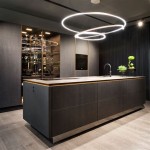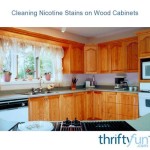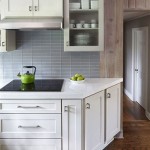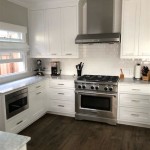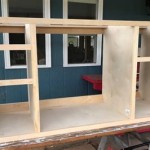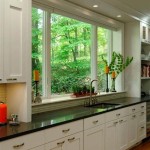Transform Your Kitchen: A Comprehensive Guide to Refacing Kitchen Cabinets
Refacing kitchen cabinets offers a cost-effective and efficient way to update a kitchen's appearance without the expense and disruption of a full remodel. This process involves replacing the cabinet doors and drawer fronts while applying a new veneer to the existing cabinet boxes. Refacing allows homeowners to achieve a fresh, modern look while retaining the existing cabinet layout and structure.
Assessing Cabinet Condition and Suitability for Refacing
Before embarking on a refacing project, it's crucial to evaluate the current state of the cabinets. Refacing is suitable for cabinets with structurally sound boxes. Inspect the cabinets for signs of water damage, warping, or significant wear and tear. If the cabinet boxes are in good condition, refacing is a viable option. However, if the boxes are damaged or the existing layout is undesirable, a full cabinet replacement might be necessary.
Choosing the Right Materials for Refacing
Selecting appropriate materials is essential for achieving the desired aesthetic and ensuring the longevity of the refaced cabinets. Several options are available, each with its advantages and disadvantages:
1. Wood Veneer: Real wood veneer provides a natural and classic look, offering a wide variety of wood species and finishes to choose from. It requires careful handling and installation.
2. Thermofoil (RTF): This cost-effective option consists of a thin vinyl film applied to a substrate, such as medium-density fiberboard (MDF). It's available in various colors and patterns but can be susceptible to heat damage.
3. Laminate: Durable and resistant to scratches and stains, laminate offers a wide range of colors and patterns. It's a more affordable alternative to wood veneer.
4. Rigid Thermofoil (RTA): A thicker and more durable version of thermofoil, RTA offers improved resistance to heat and moisture. It's available in a variety of styles.
Preparing the Cabinets for Refacing
Proper preparation is crucial for achieving a professional-looking result. The process involves removing the existing doors, drawer fronts, and hardware. Thoroughly clean the cabinet surfaces to remove grease, grime, and any residue. Lightly sand the surfaces to ensure proper adhesion of the new veneer. Fill any existing holes or imperfections with wood filler and sand smooth.
Applying the New Veneer
Applying the veneer requires precision and attention to detail. Measure the cabinet surfaces accurately to ensure proper fit. Use contact cement or adhesive specifically designed for the chosen veneer material. Apply the veneer carefully, smoothing out any bubbles or wrinkles. Trim excess veneer with a sharp utility knife or router. For complex profiles or intricate details, consider seeking professional assistance.
Installing New Doors and Drawer Fronts
Choosing new doors and drawer fronts is a key element in transforming the kitchen's appearance. Various styles, materials, and finishes are available to complement any design aesthetic. Options include shaker-style doors, raised panel doors, flat panel doors, and glass-front doors. Consider the overall kitchen style when selecting the door style and finish.
Once the doors and drawer fronts are chosen, they need to be installed carefully. Use appropriate hinges and drawer slides for proper functionality. Ensure proper alignment and secure attachment to the cabinet boxes. Adjust the hinges and slides as needed for smooth operation.
Selecting New Hardware
Choosing new hardware, such as knobs, pulls, and hinges, is the finishing touch that completes the transformation. Hardware comes in various styles, finishes, and materials. Select hardware that complements the new doors and drawer fronts and enhances the overall kitchen design. Consider the ergonomics and functionality of the hardware, ensuring comfortable grip and ease of use.
Finishing Touches and Considerations
Consider adding additional elements to enhance the refaced cabinets. Molding and trim can add architectural detail and create a more custom look. Under-cabinet lighting can improve task lighting and create a warm ambiance. Ensure proper ventilation around appliances and consider adding new backsplashes or countertops to complement the updated cabinets.
Refacing offers a significant cost advantage over full cabinet replacement. It's also a more environmentally friendly option as it reduces waste. The timeframe for a refacing project is typically shorter than a full remodel, minimizing disruption to daily routines. Refacing provides a quick and effective way to modernize a kitchen without the significant investment of a full remodel.

Professional Kitchen Cabinet Refacing Services Magic

How Do I Prepare My Kitchen For A Cabinet Refacing Project

How To Resurface Kitchen Cabinets 2024 Guide Forbes Home

How Does Kitchen Cabinet Refacing Work

Kitchen Cabinet Refacing Makeover A Homeowner S Experience

Cabinet Refacing Vs Painting Which Is Right For You

The Common Problems With Refacing Kitchen Cabinets Guilin

Professional Kitchen Cabinet Refacing Services Magic

Cabinet Refacing Process And Cost Compared To Painting

How To Reface Kitchen Cabinets Affordable Cabinet Update On A Budget Anika S Diy Life
Related Posts


